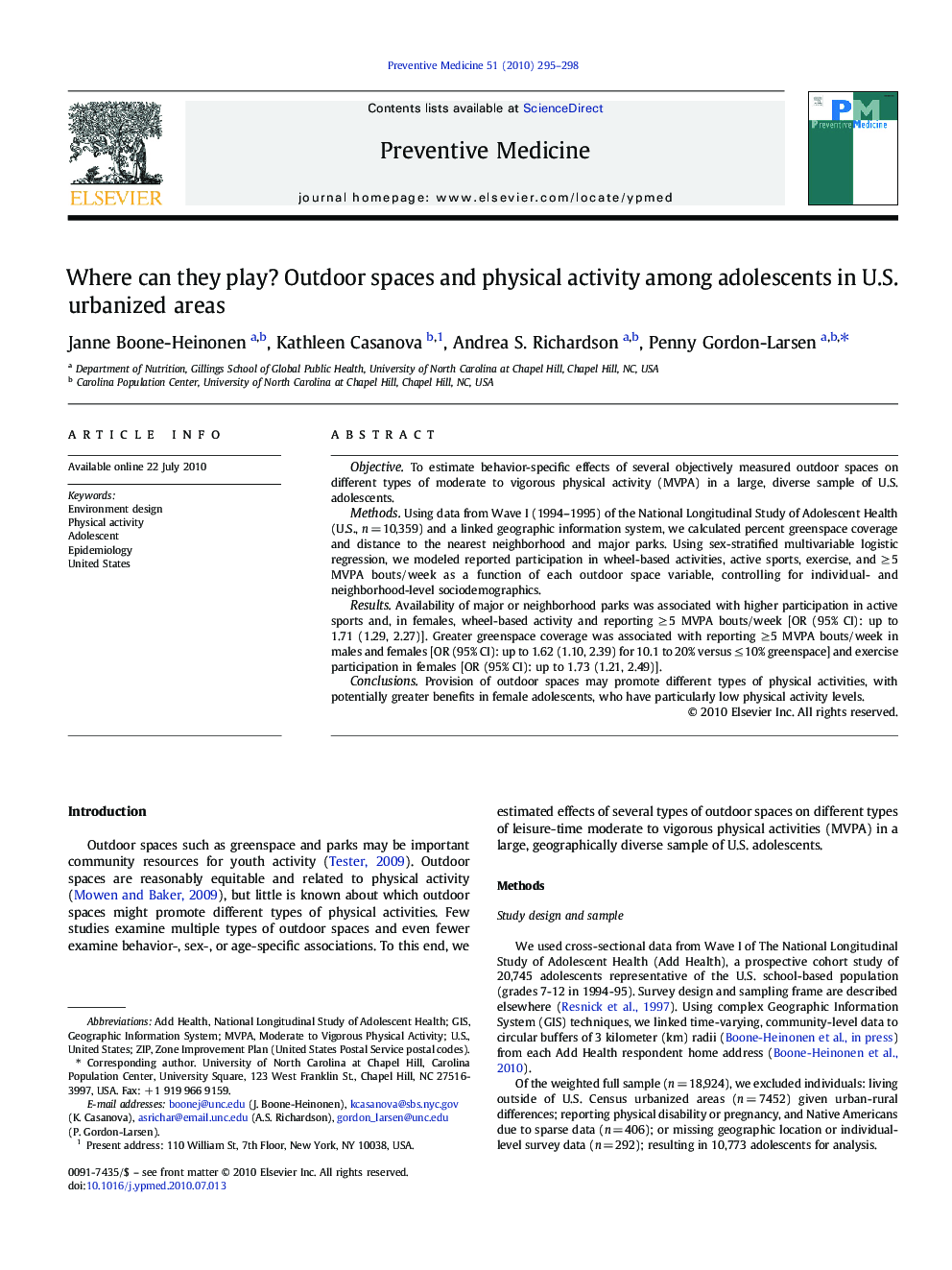| Article ID | Journal | Published Year | Pages | File Type |
|---|---|---|---|---|
| 3101005 | Preventive Medicine | 2010 | 4 Pages |
ObjectiveTo estimate behavior-specific effects of several objectively measured outdoor spaces on different types of moderate to vigorous physical activity (MVPA) in a large, diverse sample of U.S. adolescents.MethodsUsing data from Wave I (1994–1995) of the National Longitudinal Study of Adolescent Health (U.S., n = 10,359) and a linked geographic information system, we calculated percent greenspace coverage and distance to the nearest neighborhood and major parks. Using sex-stratified multivariable logistic regression, we modeled reported participation in wheel-based activities, active sports, exercise, and ≥ 5 MVPA bouts/week as a function of each outdoor space variable, controlling for individual- and neighborhood-level sociodemographics.ResultsAvailability of major or neighborhood parks was associated with higher participation in active sports and, in females, wheel-based activity and reporting ≥ 5 MVPA bouts/week [OR (95% CI): up to 1.71 (1.29, 2.27)]. Greater greenspace coverage was associated with reporting ≥ 5 MVPA bouts/week in males and females [OR (95% CI): up to 1.62 (1.10, 2.39) for 10.1 to 20% versus ≤ 10% greenspace] and exercise participation in females [OR (95% CI): up to 1.73 (1.21, 2.49)].ConclusionsProvision of outdoor spaces may promote different types of physical activities, with potentially greater benefits in female adolescents, who have particularly low physical activity levels.
